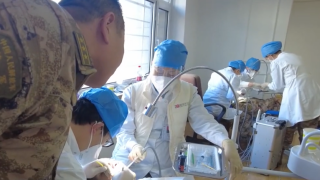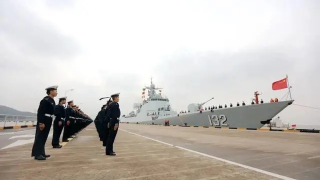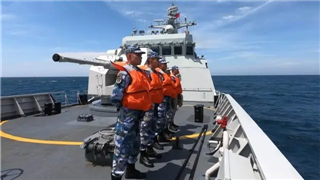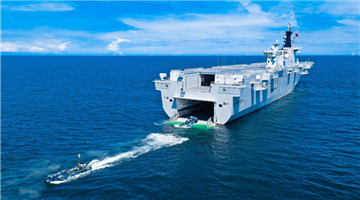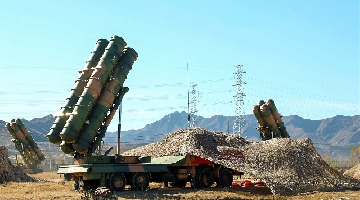By Liu Zuokui
NATO secretary general Jens Stoltenberg recently said that the organization may raise the 2% of GDP target for its members’ defense spending at the next summit likely to be held in Lithuania’s capital Vilnius in July 2023.
Will this target be achieved? Now may be a good time for NATO members to increase their defense budget, but they still face the problem of sustainability. Increasing defense expenditure is a major issue that requires group consultation, and it has proved very difficult within NATO for a long time in the past. The US and some NATO members used to point fingers at and bargain with each other, which came to a head during Trump’s term when Washington was determined to make Europe pay. The breakout of the Russia-Ukraine conflict brought NATO from being “brain-dead” to “fully charged” overnight, and the subsequent geopolitical tension has helped the US to successfully force up the members’ defense budget.
NATO is striking the iron while it’s hot by proposing to increase the defense budget now – the conditions are just right. After the Russia-Ukraine conflict broke out, Germany promised to increase its defense budget from 1.53% of GDP to 2%, which must be the greatest breakthrough in NATO’s defense spending efforts considering Germany’s economic volume. According to statistics, countries whose defense budget reached 2% of GDP in 2021 were Greece, Croatia, the UK, Estonia, Latvia, Poland, Lithuania, Romania, and France. Many members announced to keep increasing the budget to well over the 2% line, and those that haven’t reached the line yet vowed to catch up.
By region, most Central and Eastern European countries, prompted by the Ukraine crisis, have decided to increase their defense budget to at least 2% of GDP next year. Nordic countries are quite enthusiastic too, with Finland and Sweden’s announcement to join NATO elevating the military input to a new high. NATO’s official statistics show that at least 19 members – as many as 2/3 of the 30 members in total – will see their defense spending surpass the 2% target by 2024, which is one of the reasons why Stoltenberg was so confident in saying 2% is the floor, not the ceiling.
But there is much NATO needs to do to sustain such an increase. Most NATO members are willing to pitch in to combat Russia, but some of them have set a long period partly to leave themselves some leeway in case of possible future changes in the Russia-Ukraine situation. They may scale down their defense budget if Russia is expected to lose on the battlefield, which is exactly why the US wants to keep the conflict going instead of quenching it – it wants to spur NATO members to increase their defense budget, and that’s only possible if the military conflict drags on.
Yet raising the military budget’s percentage of GDP within NATO is no small challenge from a practical point of view.
To begin with, the prolonged Russia-Ukraine conflict has taken a serious toll on Europe with a combination of social ills – energy crisis, inflation, and economic decline or even recession. Increasing the defense budget amid the falling fiscal revenue would put the administration of many NATO members at stake and further burden their people. At that time, if external pressure causes internal chaos, the plan to increase military budget may flop as the throne of certain countries changes hands.
Secondly, Germany’s commitment to increasing its special defense budget by a whopping 100 billion Euros in 2022 has made it the second largest military spender in the West following the US. There are already discussions about whether such a massive increase in military budget would trigger the “German issue” or “German threat”, which reminds us of a fundamental proposition that came up when NATO was first founded – keep the Soviet Union out, the Americans in, and the Germans down. But changes are on the horizon judging from the current situation.
At last, there is a big question mark as to how the growing military budget will be spent. NATO members in Europe are divided over whether to spend it on buying American weapons or on strengthening the EU’s defense independence. It’s a choice they have to make even though the official announcement is that the US defense and EU defense are integrating. Most European countries wouldn’t want to see the bulk of the money being spent in the Indo-Pacific region as part of NATO’s efforts for transformation.
NATO is the outcome of the Cold War whose very existence is doubted with the disintegration of the biggest enemy, the Soviet Union, so it has been on a lasting journey of transformation for survival ever since. The NATO 2022 Strategic Concept called Russia the primary strategic threat to Trans-Atlantic security and China a systemic challenge to its security, values, and other interests, pushing NATO’s expansion from Europe to the Asia Pacific and even the world in general. But the Europeans may not accept such transformation so willingly as, being so far away from the Asia pacific, most countries don’t want to follow the US in geopolitics, much less to get entangled in the Asian-Pacific geopolitical game as the game in Europe is already exhausting enough.
(The author is deputy director and researcher at the Institute of European Studies of Chinese Academy of Social Sciences)
Editor's note: Originally published on huanqiu.com, this article is translated from Chinese into English and edited by the China Military Online. The information and opinions in this article do not necessarily reflect the views of eng.chinamil.com.cn.
